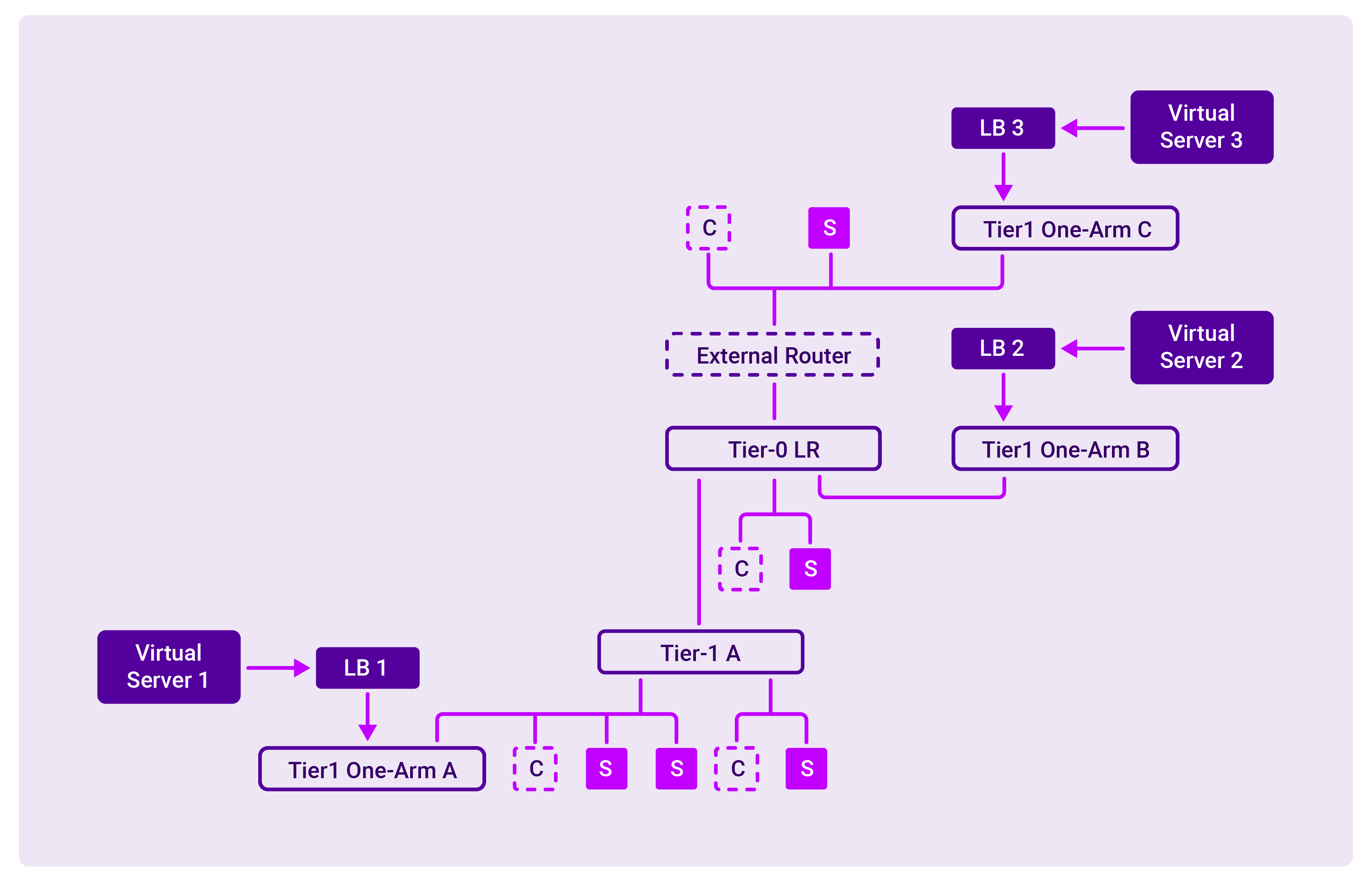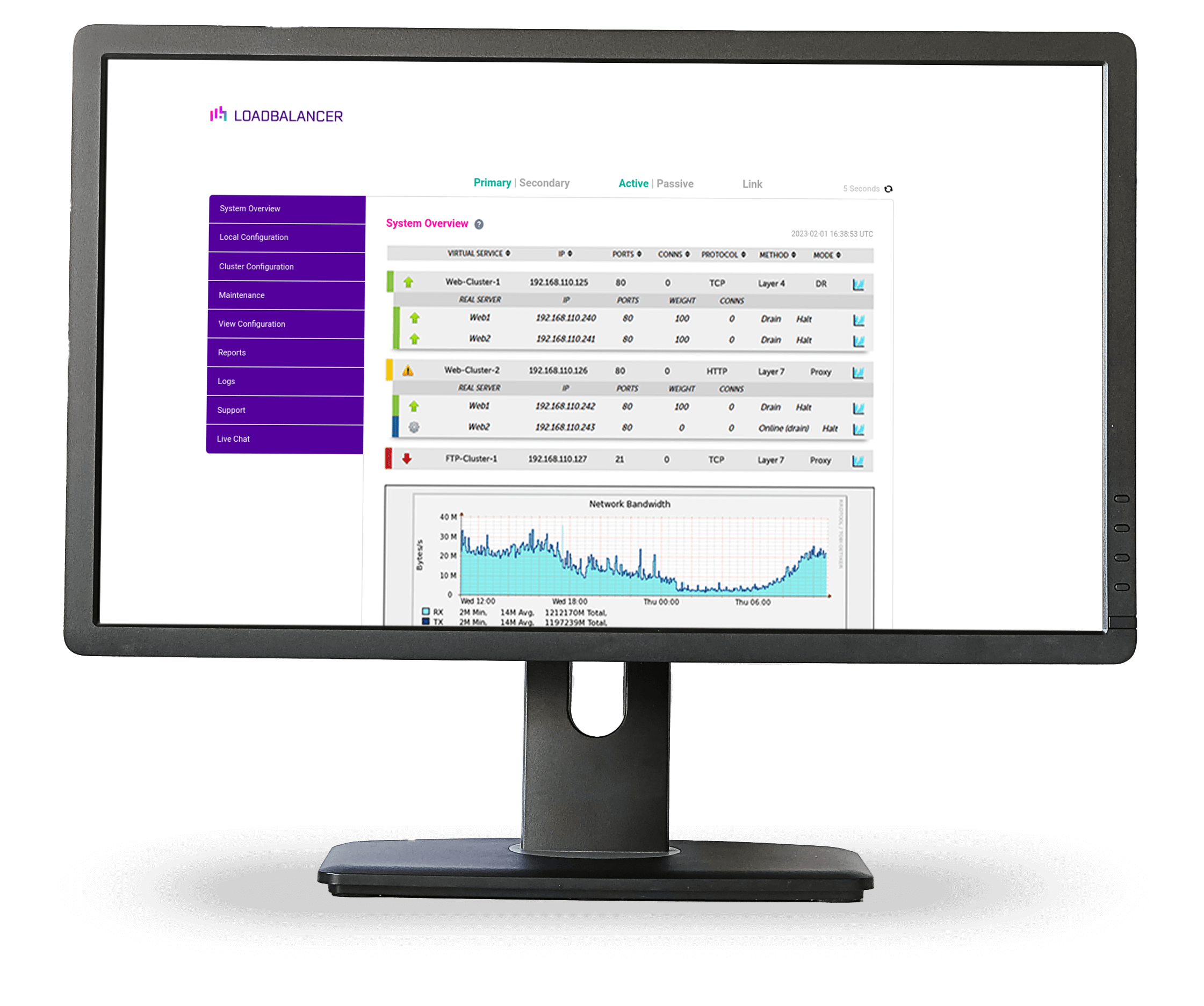
VMware's recent acquisition, and the introduction of additional subscription-based licensing costs have led many companies to re-evaluate their options. It's unlikely that many will completely ditch VMware. However, several companies I've talked to recently are concerned that the cost and complexity of NSX, may mean it is no longer fit for purpose. But what's the alternative?
Why are they looking for a VMware NSX load balancing alternative?
After Broadcom's acquisition of VMware, the introduction of subscription-based licensing forced customers with a perpetual license to start paying an additional subscription fee. This has left many organizations reassessing their virtualization strategies and dependency on other VMware products, including VMware NSX.
NSX is a powerful network virtualization and security platform from VMware used for load balancing. The VMware Advanced Load Balancer provides consistent and resilient application delivery for critical enterprise applications. A lot of software defined network fans love NSX, because its so flexible. But application folks tend to grumble at the complexity:
- NSX-T load balancers are deployed as tier-1 gateways on NSX edge appliances.
- An NSX Tier-1 gateway is a virtual router inside of NSX. It has its own routing table, memory space, and virtual network interfaces that can connect to network segments you designate. Think of each load balancer as a virtual router with unique instances of those attributes.
- NSX edge appliances are simply VMs or physical servers that provide a pool of CPU, memory, and network uplink capacity for NSX virtual routers / gateways.
A great example of what this complexity means, along with network diagrams, can be found in this blog by Ronald De Jong:

Source: One-arm load balancing with NSX-T (part 1), Ronald De Jong
Why do they want to avoid the complexity of NSX?
I would argue that your application teams only really care about the NSX edge appliance, and they hate dealing with the networking team every time that they want to get simple changes applied. In fact, what they really want to do is control their own load balancer in the same way that they control their application servers.
Which is one of the reasons we've been seeing more and more application teams reject the NSX advanced load balancer. They are choosing to deploy Enterprise load balancers as virtual machines.
They are far less complex, and much easier to understand and maintain. The added benefit is that you no longer need to worry about the network team, and vice versa.
Why are NSX customers migrating to Loadbalancer.org?
Loadbalancer's Enterprise ADC is an enticing alternative for businesses seeking to break free from the constraints of VMware's NSX advanced load balancer for three main reasons.
1. Platform and application migration made easy
The Loadbalancer Enterprise appliance is designed to work seamlessly across a diverse range of hypervisors, offering the ultimate in flexibility and independence. Whether your organization leans towards Hyper-V, KVM, Nutanix, or even Xen, this solution ensures compatibility without compromising performance. And of course, you can deploy the same appliances to your cloud infrastructure (Azure, AWS or GCP) just as easily.
Our powerful templating, backup and recovery functionality allows you to effortlessly migrate workloads between platforms, with our tierless support team here to guide you through every step.
2. Flexible licensing and sensible pricing
But perhaps the biggest benefit to Loadbalancer's customers is their simple, transparent, and cost-effective licensing model that offers the following*:
| Enterprise VA Basic | Enterprise VA Prime | Enterprise VA Max | |
|---|---|---|---|
| Price | $2,360 | $4,710 | $9,900 |
| Throughput | 400Mbps | 4Gbps | Unrestricted | SSL | 400 TPS | Unrestricted | Unrestricted |
| Servers | Unrestricted | Unrestricted | Unrestricted | GSLB | Optional | Included | Included |
| WAF | Optional | Included | Included |
*Prices correct at time of publication
- Perpetual license - The traditional option with low annual support charges.
- Subscription license - The modern flexible option, with less cash upfront.
- Site license - Unlimited load balancers at a single data center for approximately the same price as just 6 pairs!
And our 'Freedom license' means you can migrate between hypervisor platforms at no extra cost, so you’re never locked-in and can seamlessly upgrade/downgrade license(s), and seamlessly switch between subscription and perpetual.
3. Performance and peace of mind
The Loadbalancer Enterprise ADC is not just a substitute; it's an enhancement. With its Advanced Load Balancing capabilities, it ensures optimal performance and reliability for your applications, mirroring the efficiency of NSX, but without the hefty licensing fees.
You can tell instantly from the web based interface that Loadbalancer truly believe in clever not complex solutions, easy to deploy and manage, simple to maintain.

When combined with SR-IOV the Loadbalancer gives near wire-speed performance. And because it's based on the same open source technology that Amazon & Cloudflare use, you get peace of mind.
What's NOT on offer at Loadbalancer?
NSX performs best when used at scale, federating multiple sites under one software-defined architecture. Network architects love the idea of being able to control everything in one central place. Which is great, in theory, however I constantly come across organizations who have tried and failed to standardize their architecture. They still end up with fragmented security, networks, and applications — and often come to us to help sort out the mess they have unintentionally created.
Realistically, most Enterprise networks are always multi-vendor, with multiple teams handling different aspects of the network and application infrastructure in a unique way. That's why Loadbalancer tries very hard to be vendor-agnostic and platform neutral! Yup, you read that right.
So what's NOT on offer at Loadbalancer?
Fragmented security, networks, and applications!
How easy is it to migrate from VMware NSX to Loadbalancer?
Transitioning away from NSX might seem daunting, but Loadbalancer makes it a seamless process. The intuitive management interface simplifies configuration and monitoring, empowering your team to adapt quickly to the new solution.
By embracing a hypervisor-agnostic approach and providing a scalable, budget-friendly alternative, Loadbalancer is positioning itself as a viable choice for organizations seeking a smoother transition and enhanced performance in their virtualized environments.
The future of virtualization is evolving, and with options like Loadbalancer, businesses can confidently chart a path toward efficiency and cost-effectiveness.
What's the first step?
It is really simple to start using the Loadbalancer Enterprise ADC.
You can download our fully functional appliance and be up and running within minutes. Once you've started your free trial, you'll be able to setup and test your applications alongside your current configuration.
And on top of all that, we have an extensive list of application deployment guides on our website, with step-by-step instructions on how to load balance your specific application, and our friendly technical support team here to answer any queries.
The end result?
We have seen a surge in customers moving away from VMware NSX to Loadbalancer for their load balancing requirements. We get their frustration. One of our beliefs has always been customer satisfaction — which is why our support team get such great reviews!
So if VMware NSX is causing you pain, why not migrate to a world of load balancing with no resource limitations, and join a long line of established blue-chip customers from GE Healthcare, Fujifilm to Fiserv.
















